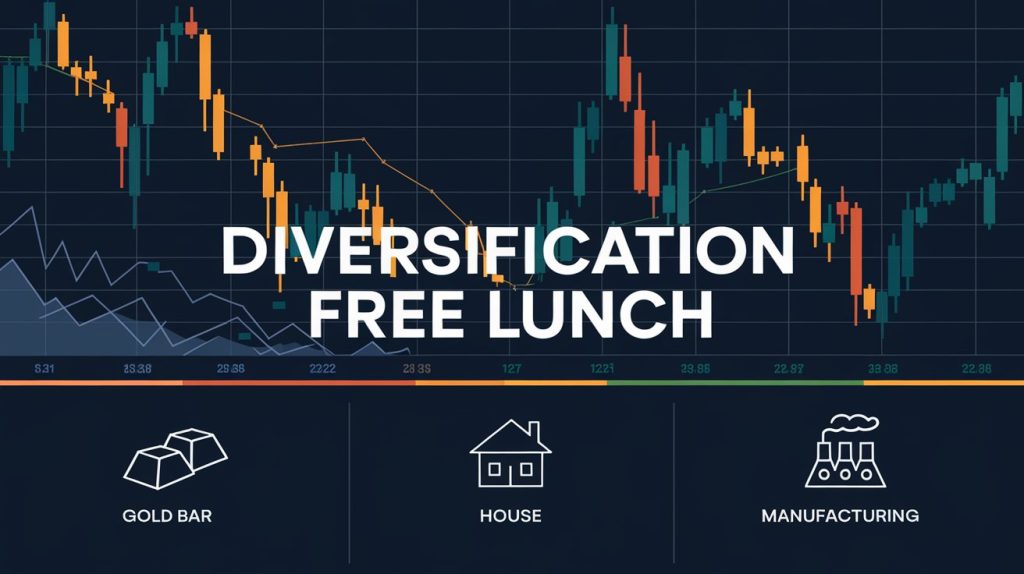
Most investors approach long term investment portfolio allocation very casually. Typical processes involve investing whatever cash is available, investing an equal number of shares among all stocks in the portfolio, investing an equal number of dollars among all stocks in the portfolio, or setting some thresholds (I will invest $x to start and if the stock shows profit, I will add another $y). Most of these methods are ad-hoc and do not produce an optimal portfolio.
Portfolio allocation is not just an art. It is a well-developed science, although some of the inputs to the process only come from experience.
Why Strategic Allocation Matters in Value Investing?
When you run a value investing portfolio, you very quickly start to systematize your processes. Some of the questions you bump into fairly early include:
- Shall I buy stock A or stock B? Or both?
- How much shall I allocate to this stock?
- The stock went down? Shall I increase my position?
You get the gist. These are the basic mundane questions. If you are like most investors, you may just put these off for later and carry on with your day.
After all you think, having a position in a promising stock is the most important step. Everything else is minor. Right?
Wrong!
In many ways, your portfolio allocation is more important than the stocks you own in your portfolio. To understand why, let’s consider the following.
Say, you are choosing between 2 stocks, A and B. You expect stock A to return 10% in one year, while you expect stock B to return 50% in one year. You have great experience in estimating stock’s intrinsic value and your conviction has generally worked out with great amount of success in the past. Which stock should you choose?
This is quite easy. If all other things are equal, you will choose stock B – it has higher expected return.
Suppose all things are not equal. If you are wrong, stock B is likely to lose more than stock A. What now? Now you will start coloring your expected returns with “risk”.
If you do not consider risk, you should bet 100% of your portfolio in stock B. However if you do this and if the company goes bankrupt, you lose all your net worth.
If you are too risk averse, you may choose stock A, or none at all. In this case you will reduce the risk of loss, but your long term returns will not be fully optimal.
If you think the solution will be to buy both stocks A and B in some proportion, you are getting close. If A and B are uncorrelated or counter correlated, together they may actually reduce the risk of your overall portfolio. Then it comes down to picking the proportions that will maximize your portfolio expected returns while mitigating the portfolio risk as much as possible.
If you find the right balance, you will have a growth optimal portfolio.
This was figured out by John Kelly of Bell Labs in 1956. He developed a formula called Kelly Criterion to determine how much of your bankroll (or portfolio) to bet on any single bet (or investment) to maximize wealth growth over time while reducing the risk of getting wiped out to zero.
The formula involves two inputs: the probability of winning, and your win/loss ratio (how much you gain if you win versus how much you lose if you lose).
Warren Buffett and Bill Gross are just 2 of the well known investors who use this concept in their portfolio allocation.
A great thing about being a value investor is that you have some specific ideas on how to figure out the intrinsic value of a company. Once you do this, and you consider the current stock price, you can estimate your returns. You can likely also estimate your downside (perhaps it is the liquidation value of the company). And if you have been doing this long enough, you can look back in your history and figure out how many investments you have made money on and how many you have not and this will give you the probability of winning (assuming you have a consistent process to pick stocks).
Then you can apply Kelly formula to pick your allocation, as long as you make a single bet at a time.
But what do you do if you have a portfolio of stocks? Suppose you allocated 10% of your portfolio to stock A. Now you have 90% of your portfolio still in cash. You just found a great value stock, stock B, and you determine its Kelly bet to be 15%. Is this 15% of your entire portfolio, or is this 15% of the uninvested cash in your portfolio?
The answer is, it depends. If stock B is not correlated to stock A (say a different sector or industry), then you will be able to allocate a higher % of your portfolio to this stock. If, on the other hand, stock B is Home Depot and you already have Lowe’s in your portfolio, you are probably better off allocating very little to none in stock B. In a multi-asset portfolio, you cannot use single bet Kelly Criterion to determine your weights. You have to take the stock correlations into account.
You can do this by extending the Kelly Formula to multi-asset portfolio. At Astute Investor’s Calculus, we estimate returns, evaluate correlations, and review individual stock standard deviations to determine Kelly fractions to find the optimal allocation to each stock within the portfolio.
What does this mean in practice? It means,
- The process forces you to diversify as you work to cancel out volatilities and correlations
- You balance allocations based on expected returns versus risk
- Sometimes great value stocks do not make it into the portfolio because we already own something that is highly correlated and a better investment. Remember the adage, you sell a holding only if either it reaches your price target, you are proven wrong, or you find a better investment? Better investment is a subjective term – this process tells you clearly which stock is a better investment.
- If the company you own grows it earnings, the expected returns will stay non-zero as your price targets will move upwards with the growth. In such cases, you will end up owning this stock forever. Remember Buffett claiming he aims to own quality companies forever? This is what he means.
Fractional investing using Kelly fractions provides a mathematically optimized approach to portfolio allocation by tailoring the size of each position based on its expected return and risk. Unlike naïve equal weighting, which assigns the same capital to every asset regardless of its potential, Kelly ensures that higher-return investments with favorable risk profiles receive proportionally larger allocations. This precision helps you avoid overexposure to low-potential assets and underinvestment in strong opportunities.
Additionally, fractional investing with Kelly allows for dynamic adjustment as new information emerges, improving long-term performance. By contrast, equal weighting ignores key factors like volatility and covariance between assets, making the portfolio more susceptible to suboptimal returns and unintended risks over time.
One last thing. Even if you know which stocks Buffett is buying and you buy the same stocks, faithfully, year after year, you will still not be able to duplicate his performance. Now you know why. You do not have the same portfolio allocation and your portfolio is very likely allocated sub-optimally.
Kelly fractions can be calculated in Excel and I lay out the process here, assuming you have good idea of the expected returns, standard deviations and correlations (or covariances).
Restoring Your Long Term Investment Portfolio Allocation and Capturing Additional Returns through Volatility Harvesting
Once you set your optimal portfolio allocation, it will drift over time and become suboptimal. This will happen for the following possible reasons:
- Some positions have appreciated in price while some others have lost value
- You have updated price targets, and hence the estimated returns have changed
- There is a natural change in volatilities and correlations
- You are adding/removing positions
For all these reasons, you should plan to recalculate your portfolio allocations periodically. For a long term investment portfolio, I suggest doing this monthly. You may also want to choose 1 year as your reference period for your standard deviation, correlation and price target numbers. There is no right or wrong, but it makes sense for you to align with your investment horizon. You are always able to change your parameters as you get more comfortable with the process.
You may also want to rebalance more frequently even when you are not updating your portfolio allocation. So for example, if you recalculate your portfolio allocation once a month, you may want to rebalance once a week or even once per day. This will correct any short-term drifts and do something magical – it will create returns out of thin air by harvesting volatility by a process called Shannon’s Demon.
Of course, you want a balance in how frequently you rebalance as this will cause appreciated assets to sell (a portion of it). Which means there will be capital gains tax to deal with. You may also get into wash sale situations which may defer some of your tax losses for later years. But if you are nurturing a portfolio in your retirement plan that is tax-sheltered, you are able to be more aggressive with rebalancing. In my retirement plan, I do this daily where as in my taxable accounts I may only do this once a week or once a month.
Another way to minimize the rebalancing frequency is to only do it when one of the positions drifts by a certain percentage, for example 5%, from its Kelly fraction. This will eliminate most of the small transactions and you will capture larger movements.
As a value investor, you definitely appreciate what rebalancing does to your portfolio. It makes you sell at high and buy at low, mechanically, without letting your emotions interfere with compounding.
Tools and Techniques to Manage Allocations and Rebalance
The constant checking for the drift and rebalancing can become quite tedious if you do it manually. I recommend using some of the tools that may already be available at your broker. For example, Fidelity Investments offers Basket Trading where you set an allocation for the stocks in your portfolio by creating a basket and then you can rebalance whenever you want at the click of a button.
If you contribute new money to the portfolio, it will automatically allocate it to restore the percentages. If you wish you can choose to avoid any rebalancing and just maintain correct allocations by adding new money or reinvesting collected dividends in the portfolio using Smart Buy (where it buys under allocated assets until the correct allocation is achieved).
M1 Finance offers similar product called Pies.
If you do not have access to either of these, you can still do this in a spreadsheet. Another alternative is to use portfolio management software like Stock Rover. It has a rebalancing function that will recommend you the values for each asset that you need to buy or sell to bring the allocation back in line. Stock Rover also gives you standard deviations (volatility), and correlations and is an excellent tool to conduct stock research and due diligence, that I use it myself.
Long-term portfolio allocation is both an art and a science. Incorporating Kelly fractions and matrix-based optimization ensures every dollar is strategically invested. Regular volatility harvesting through rebalancing further enhances returns while controlling risk. Finally, using automated tools like Fidelity Baskets and M1 Finance Pies brings convenience and precision to portfolio management. With the right approach, you’ll stay the course through market cycles and grow your wealth sustainably over time.
Photo by Markus Spiske on Unsplash

Shailesh Kumar, MBA is the founder of Astute Investor’s Calculus, where he shares high-conviction small-cap value ideas, stock reports, and investing strategies.
His work has been featured in the New York Times and profiled on Wikipedia. He previously ran Value Stock Guide, one of the earliest value investing platforms online.
Subscribe to the Inner Circle to access premium stock reports and strategy insights.
Featured in:








